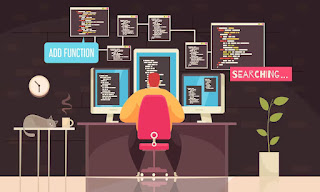Object Detection using AI - Use Cases & Applications
Object detection, a significant advancement in the field of artificial intelligence, involves identifying and classifying objects within an image or video. Powered by deep learning techniques and neural networks, object detection has a broad range of applications across various industries. This essay explores some of the primary use cases and applications of AI-driven object detection.
Security and Surveillance
Object detection plays a pivotal role in enhancing security and surveillance systems. Traditional surveillance relied heavily on human monitoring, which is prone to errors and inefficiencies. AI-driven object detection can automate the process, identifying unusual activities, unauthorized access, and potential threats in real-time. This technology is employed in various settings:
- Public Safety: Object detection systems can identify suspicious behaviors, unattended bags, or loitering individuals in public spaces, airports, and train stations. This early detection can help prevent incidents before they occur.
- Home Security: Smart home cameras equipped with object detection can differentiate between humans, pets, and other moving objects, reducing false alarms and providing homeowners with accurate alerts.
Autonomous Vehicles
- The development of autonomous vehicles relies heavily on object detection technology. Self-driving cars need to accurately perceive their surroundings to navigate safely. AI video analytics software, integrated with object detection systems in autonomous vehicles, is used for:
- Pedestrian Detection: Identifying pedestrians on the road to prevent accidents.
- Traffic Sign Recognition: Detecting and interpreting traffic signs and signals to ensure compliance with traffic laws.
- Obstacle Detection: Recognizing obstacles such as other vehicles, animals, or debris on the road to navigate safely.
Retail and E-commerce
In the retail and e-commerce sectors, object detection enhances both the customer experience and operational efficiency. Some notable applications include:
- Inventory Management: Object detection can automate the inventory management process by identifying and tracking items on shelves. This reduces the need for manual counting and helps maintain accurate stock levels.
- Customer Insights: Retailers can use object detection to analyze customer behavior, such as which products attract the most attention or how customers navigate the store. This data can inform store layout and marketing strategies.
- Automated Checkout: Object detection systems can identify products at checkout, streamlining the process and reducing the need for barcodes.
Healthcare
Object detection is transforming healthcare by improving diagnostics, treatment, and patient care. Some key applications include:
- Medical Imaging: AI-driven object detection can identify abnormalities in medical images, such as tumors in MRI scans or fractures in X-rays. This aids radiologists in making accurate diagnoses.
- Surgical Assistance: During surgery, object detection systems can help identify critical anatomical structures and provide real-time guidance to surgeons, enhancing precision and reducing the risk of errors.
- Patient Monitoring: Object detection can be used to monitor patients in hospitals, detecting movements that indicate distress or falls, and alerting healthcare providers promptly.
Manufacturing and Industrial Automation
In manufacturing, object detection enhances productivity, quality control, and safety. Applications in this sector include:
- Quality Inspection: Object detection systems can identify defects or anomalies in products on the production line, ensuring that only high-quality items proceed to packaging and distribution.
- Robotic Automation: Industrial robots equipped with object detection can identify and manipulate objects with high precision, performing tasks such as assembly, sorting, and packaging.
- Safety Monitoring: Object detection can monitor the work environment for potential hazards, such as the presence of humans in restricted areas, and halt machinery to prevent accidents.
Agriculture
The agriculture sector is leveraging object detection to improve efficiency and sustainability. Key applications include:
- Crop Monitoring: Object detection can analyze aerial images from drones to monitor crop health, identify pests or diseases, and assess yield. This information allows farmers to make data-driven decisions about irrigation, fertilization, and pest control.
- Automated Harvesting: Robotics equipped with object detection can identify and harvest ripe fruits and vegetables, reducing labor costs and increasing efficiency.
- Livestock Management: Object detection can monitor livestock, identifying individual animals and assessing their health and behavior, leading to better herd management and productivity.
Sports and Entertainment
In sports and entertainment, object detection enhances both the production and the viewing experience. Applications include:
- Player Tracking: Object detection can track players on the field, providing valuable data for performance analysis and strategy development.
- Broadcast Enhancement: During live broadcasts, object detection can identify key moments and automatically generate highlights, improving the viewer experience.
- Augmented Reality: In gaming and entertainment, object detection enables the integration of virtual objects into real-world settings, enhancing the immersive experience.
Environmental Monitoring
Object detection contributes to environmental monitoring and conservation efforts. Applications include:
- Wildlife Tracking: Object detection systems can monitor wildlife populations, track movements, and identify species from images and videos captured in natural habitats.
- Pollution Detection: AI-driven object detection can identify pollutants in water bodies or air, enabling timely interventions to mitigate environmental damage.
- Deforestation Monitoring: Satellites equipped with object detection can monitor forest cover and detect illegal logging activities, aiding conservation efforts.
Aerial and Satellite Imagery Analysis
Object detection is crucial for analyzing aerial and satellite imagery. Applications include:
- Urban Planning: Object detection can analyze satellite images to identify urban growth patterns, infrastructure, and land use changes, aiding in urban planning and development.
- Disaster Management: After natural disasters, object detection can analyze satellite images to assess damage, identify affected areas, and coordinate relief efforts.
- Resource Management: Object detection can monitor natural resources, such as water bodies and forests, providing data for sustainable management and conservation.
.png)


%20(1).jpg)
Comments
Post a Comment